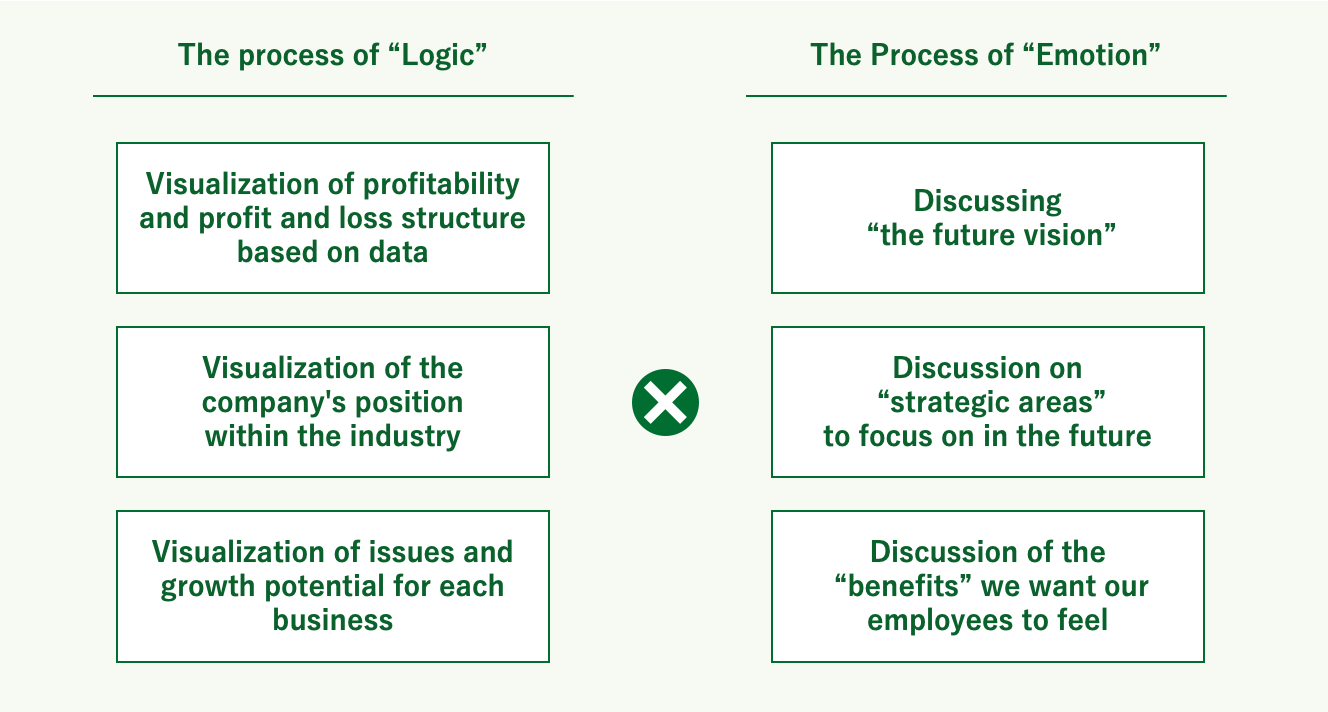【Client Situation & Background】 Bridging the Gap Between Management and Front-Line Perspectives in Mid-Term Plan Development
Starting from a point with no substantial mid-term plan development experience or a common organizational language.
The client company had inaugurated a new structure following a major group corporate reorganization. However, the post-reorganization front-line operations were characterized by a business and organizational environment where parent company directives were prioritized, and there was an emphasis on handling a continuous stream of incoming projects. This necessitated managers to focus more on operational execution than strategic management.
Conversely, the management team felt that “things cannot continue as they are” and aimed to build an organization capable of proactive thinking and action for “future growth.” However, the company lacked sufficient internal expertise in business forecasting and strategy formulation. Furthermore, there was apprehension from the front lines, with questions such as “Why a mid-term plan now?” and “Why do we need to grow significantly?”, leading to a gap in perspectives between management and the front lines.
【P&E's Approach】 "Logic" and Connecting with "Balancing sympathy"
A co-creation process that bridges the gap between figures and intuition, and between management and the front lines.
P&E’s initial step was to “visualize the entire company’s current state with facts.” We re-evaluated the profitability, marketability, and cost structure of each business segment. This allowed us to understand each department’s industry position, challenges, and growth potential based on data and facts, rather than mere intuition.
Furthermore, through diligent interviews with department heads and personnel, we unearthed unarticulated passions, such as “What strengths do they perceive?”, “What future do they envision?”, “Where do they aspire to grow in the future?”, and “What benefits do they want employees to feel?”.
In this manner, acting as “translators” connecting top management’s vision with the front-line’s pulse, we shaped the overall concept using both reason and emotion. The mid-term plan was not confined to a mere concept; it was broken down into actionable plans, designed as “executable plans” for each department.

【Outcomes & Changes】 Towards an Organization Empowered by the Mid-Term Plan
Within the client company, positive feedback naturally emerged from the front lines, such as “We became proactive because we had the mid-term plan.” The “plan that the front lines could articulate” became the common language driving the organization.
Moreover, decision-making, which was traditionally dependent on the parent company, began to be made with an “independent corporate perspective,” accelerating proposals from the front lines and horizontal collaboration.
Furthermore, the mid-term plan itself became a testament to external credibility, beginning to be utilized as a tool to articulate “the company’s future vision” in sales materials and mid-career hiring interviews. With “a plan supported by facts” and “a front line driven by passion,” the mid-term plan began to permeate all aspects of the organization as a “plan that could be articulated in their own words.”
Three Things Only P&E Could Achieve
- Structuring and Articulating “Subjective Intuition”: Visualized the business reality from both quantitative and qualitative perspectives to align the viewpoints of management and the front lines.
- From “Desk-Bound Mid-Term Plan” to “Front-Line Articulated Mid-Term Plan”: Led a co-creation process involving the front lines, starting from the departments’ aspirations and strengths.
- Supporting the Transition from “Borrowed Logic” to “Proprietary Corporate Perspective”: Assisted in establishing a future vision and decision-making framework from the company’s own viewpoint, fostering the creation of a purposeful organization.





